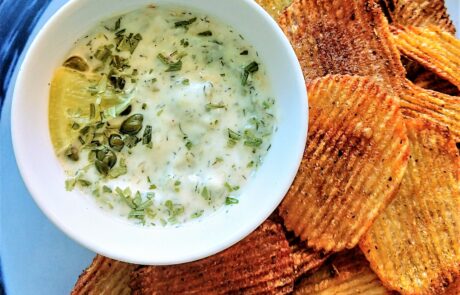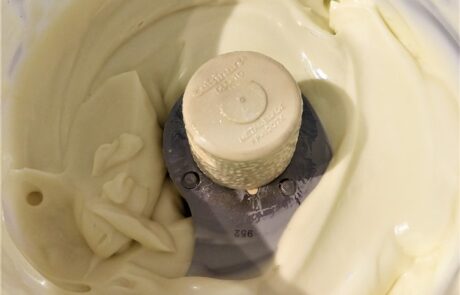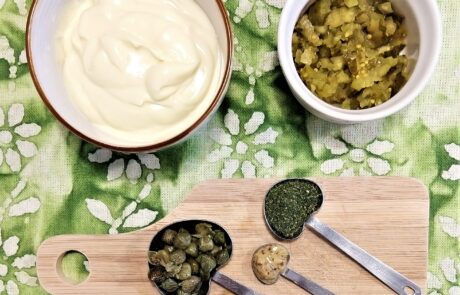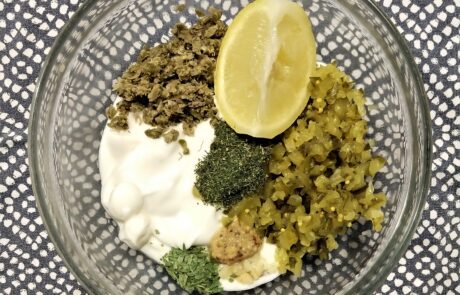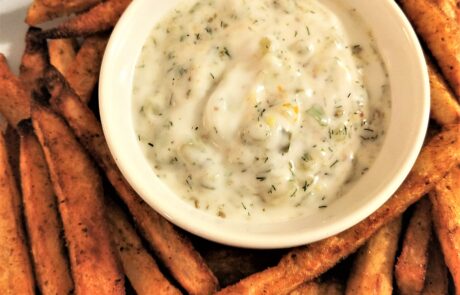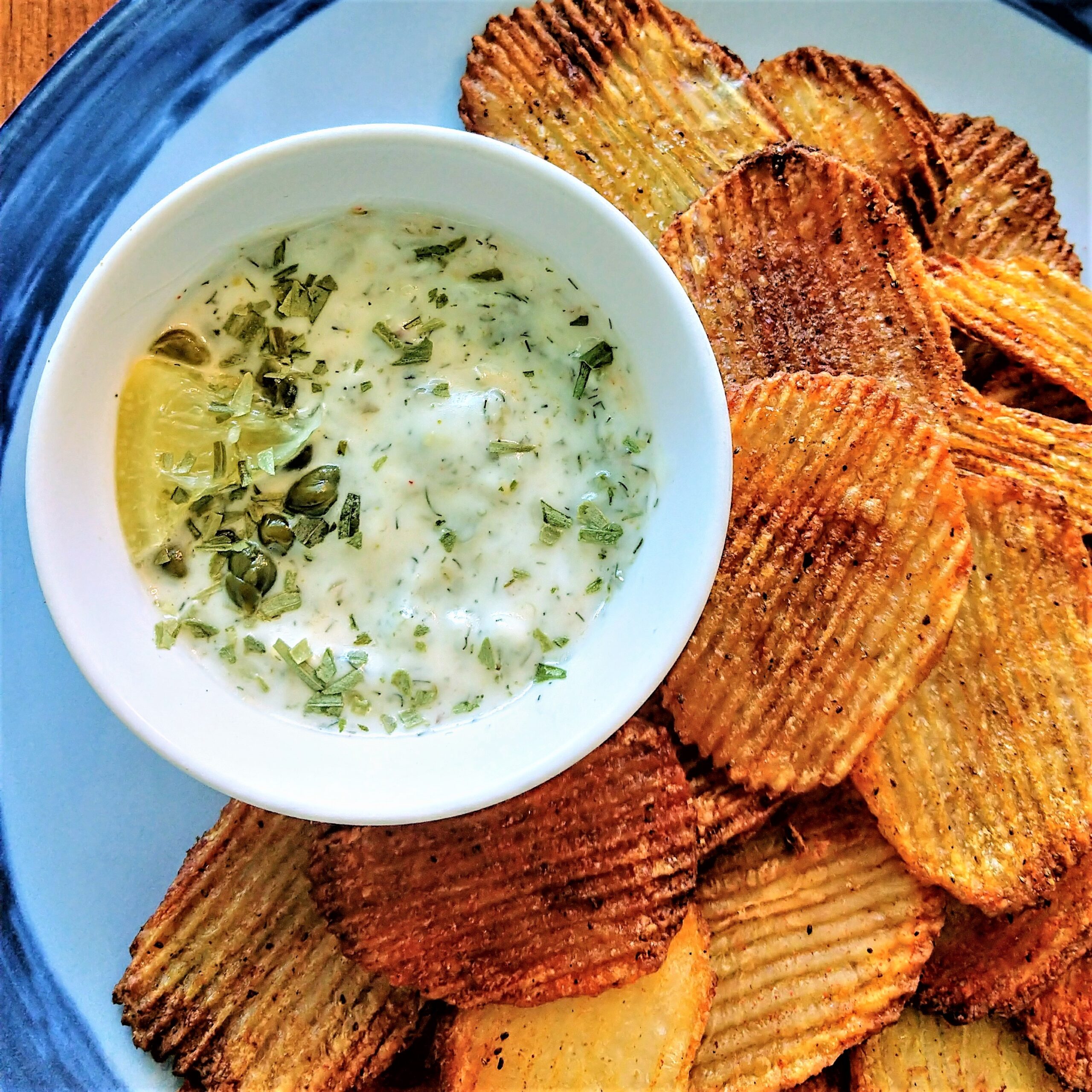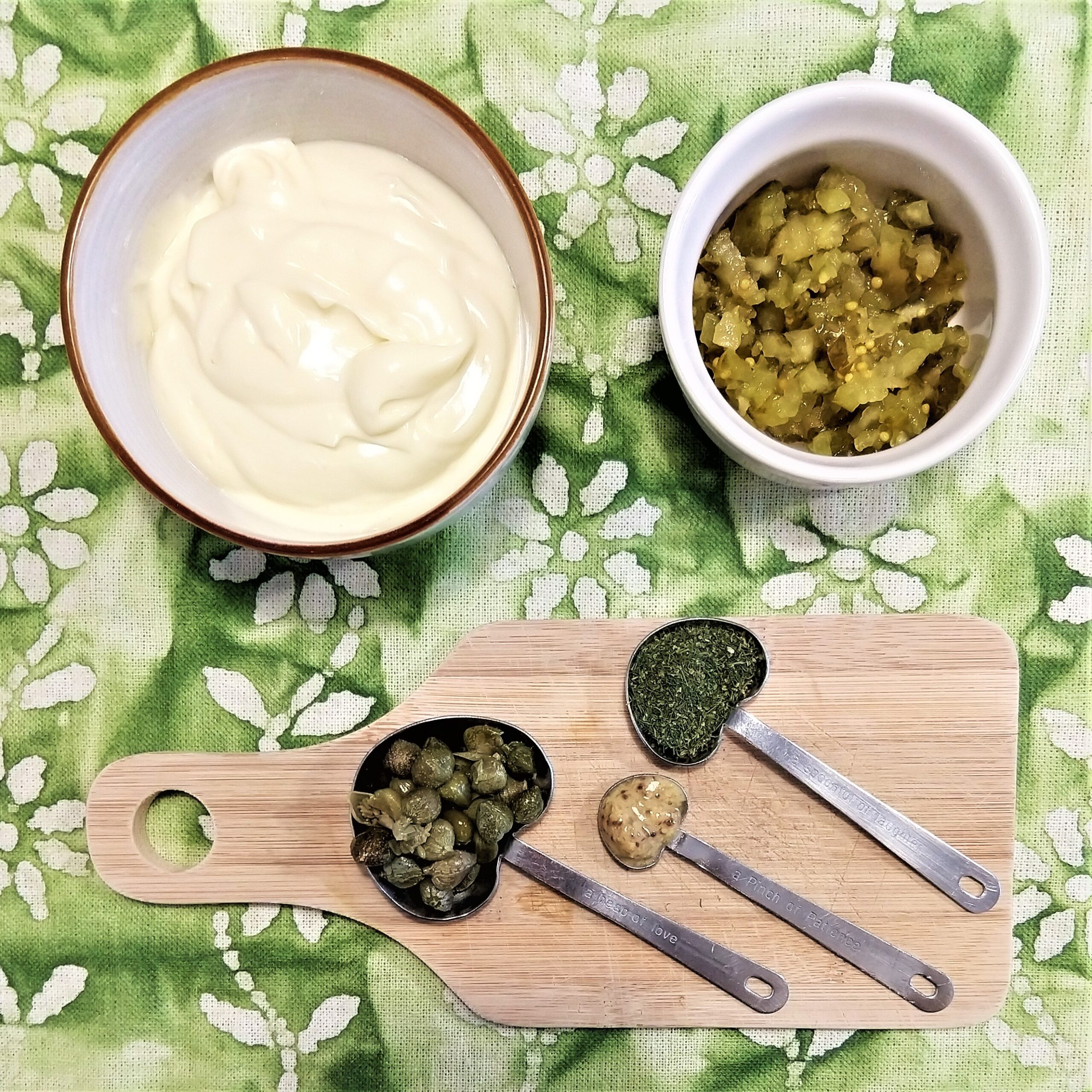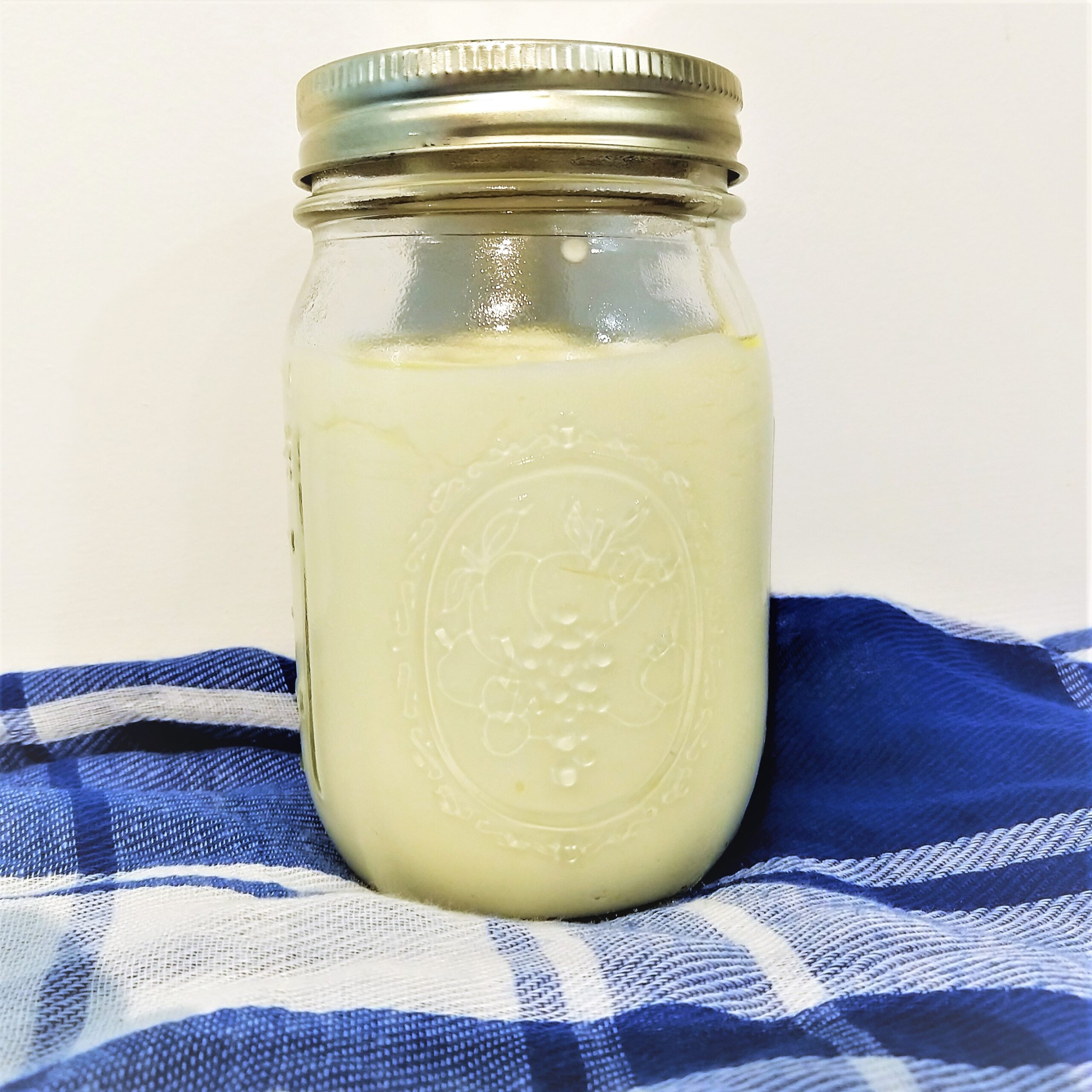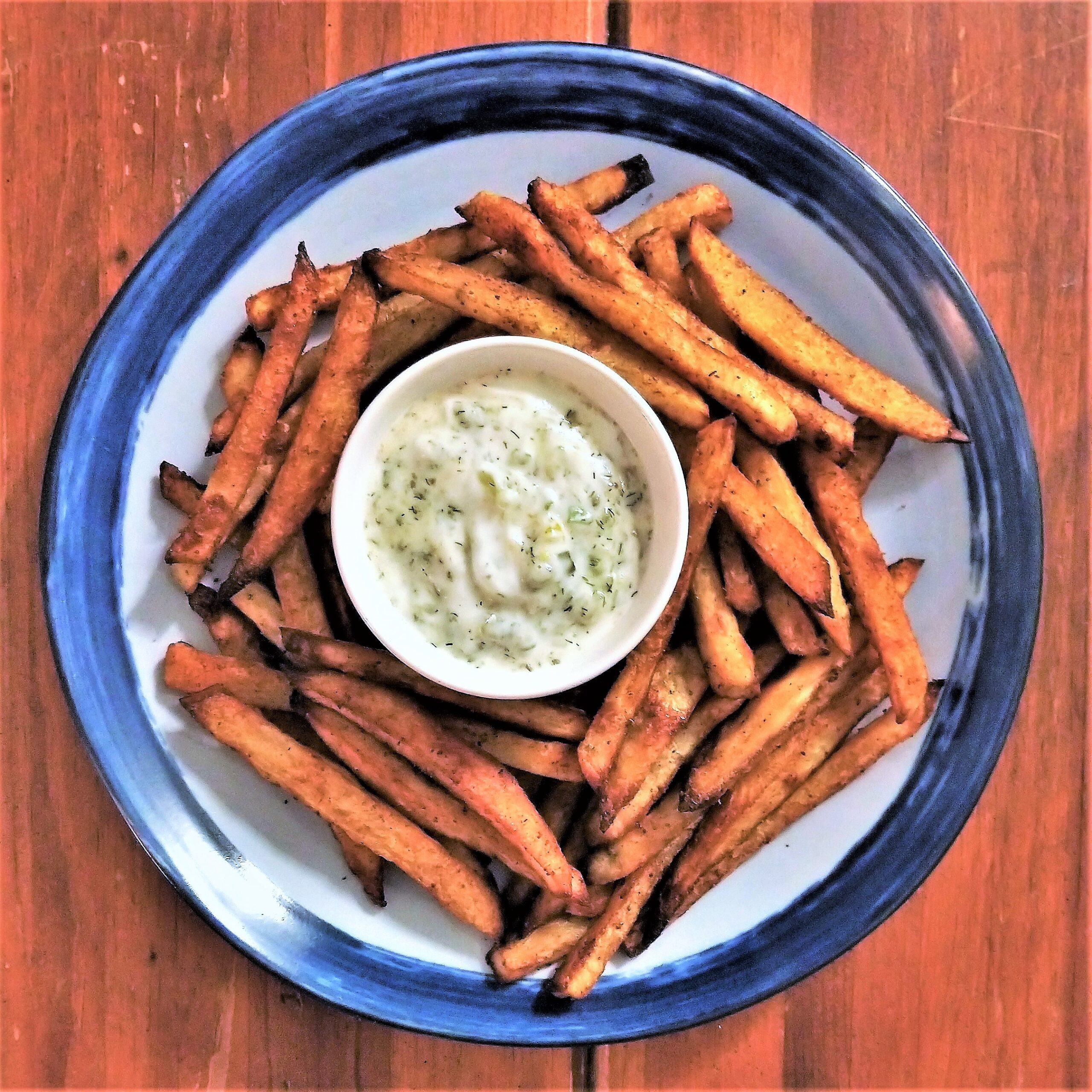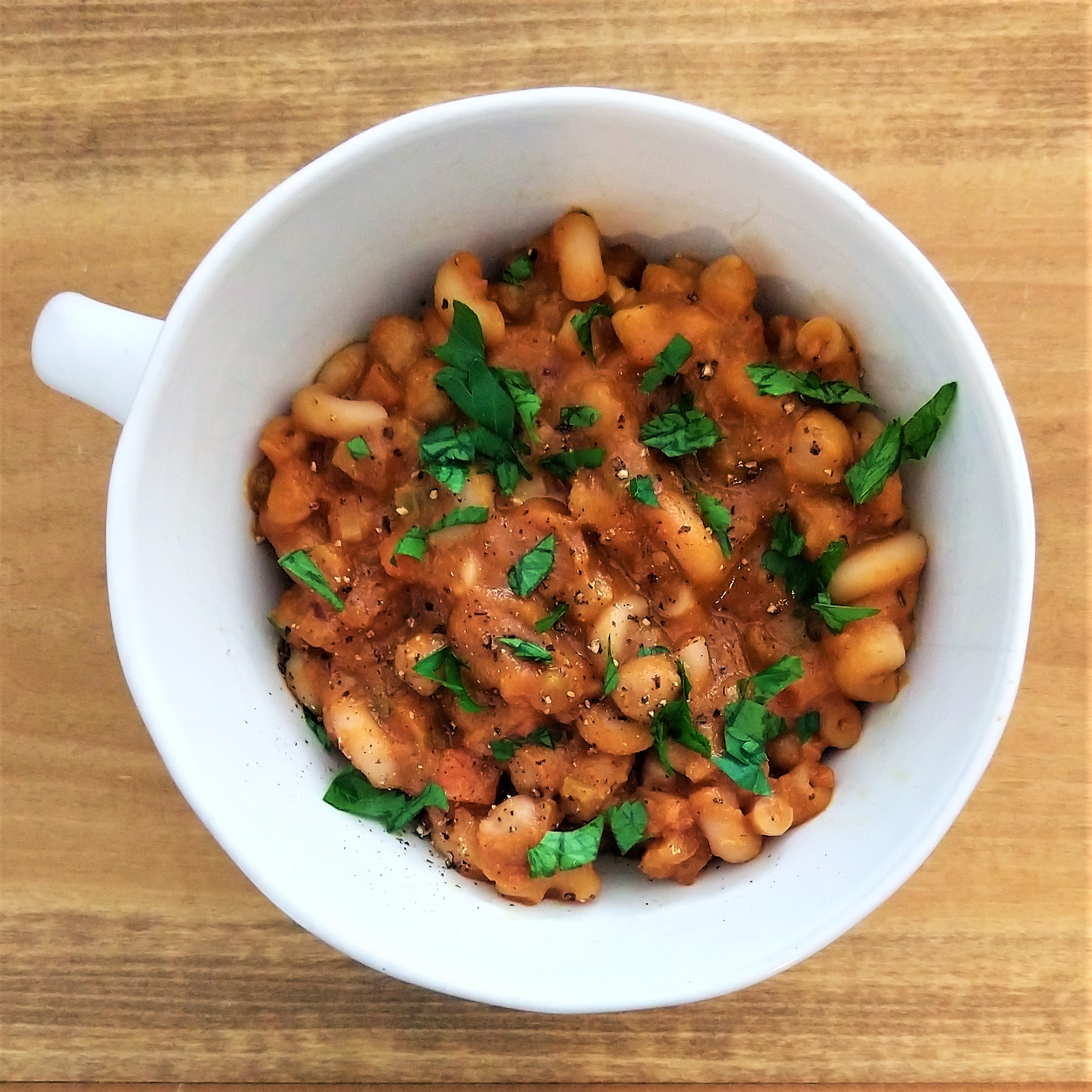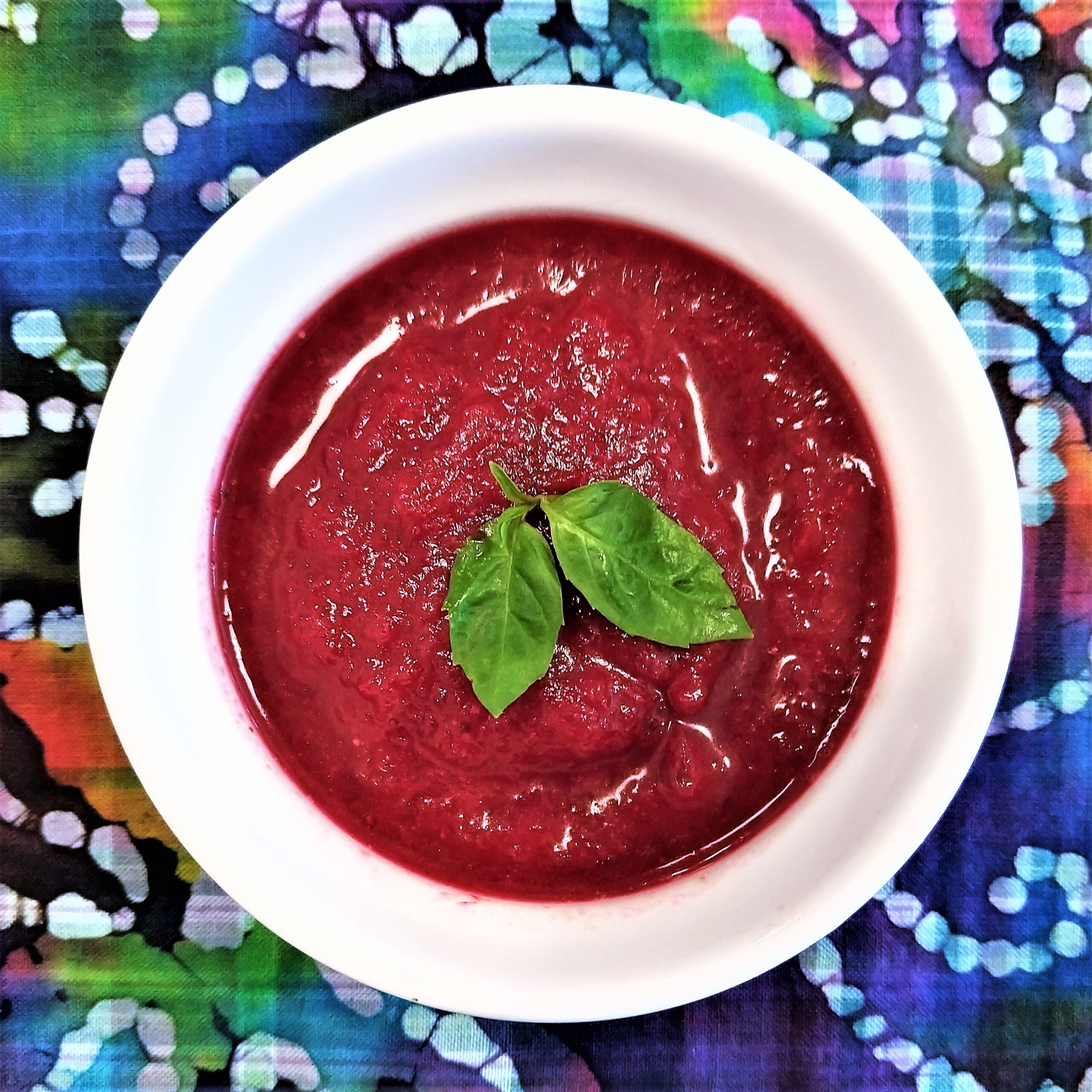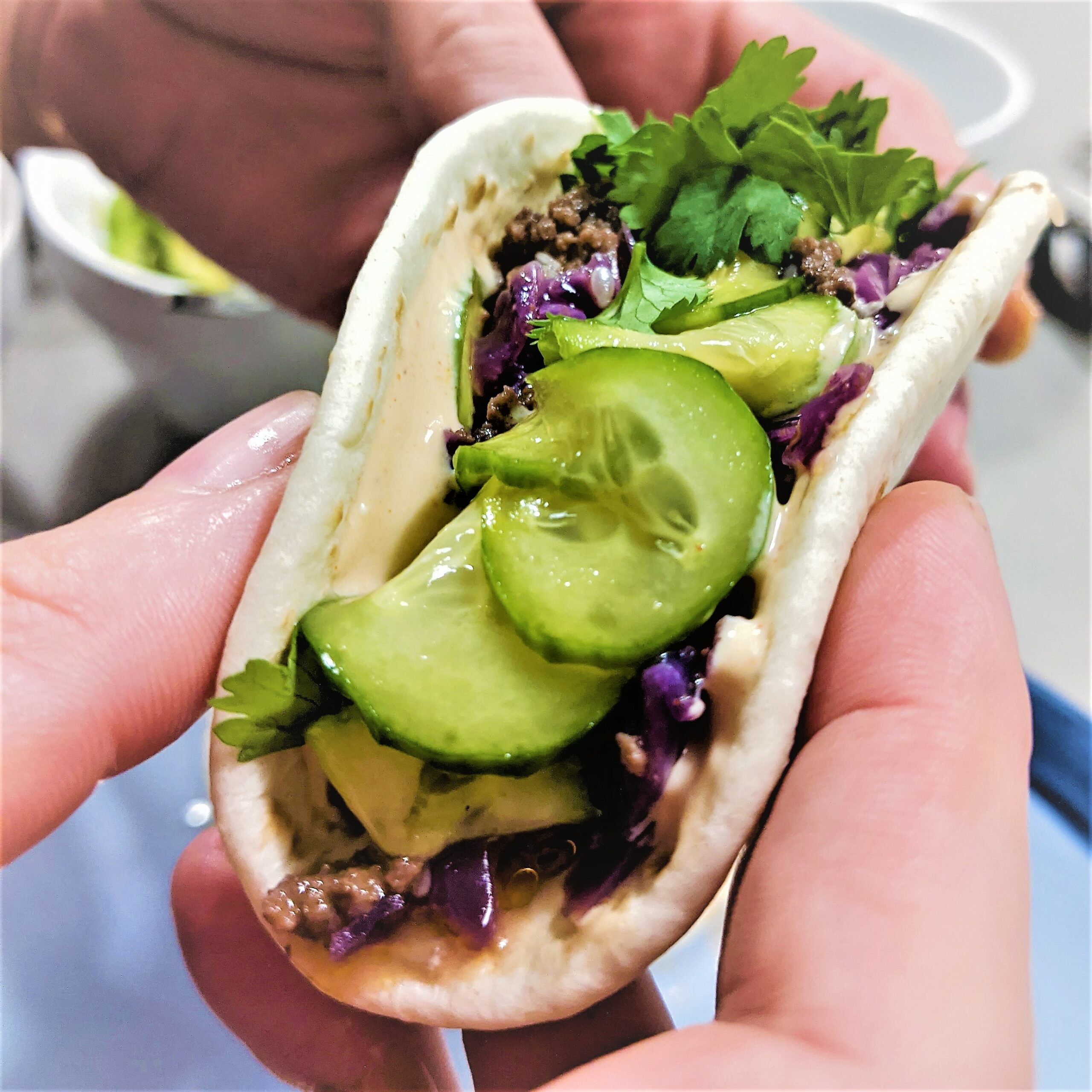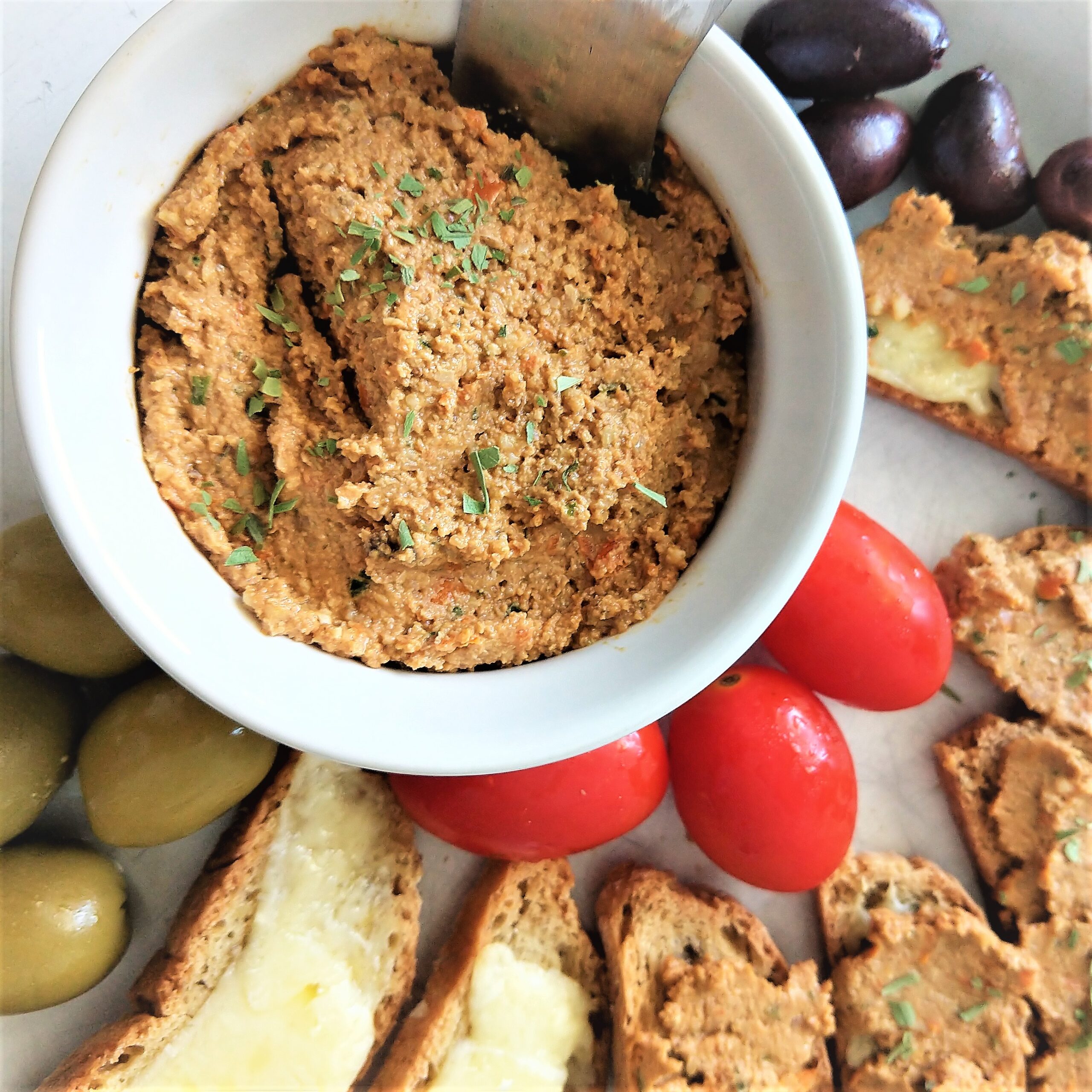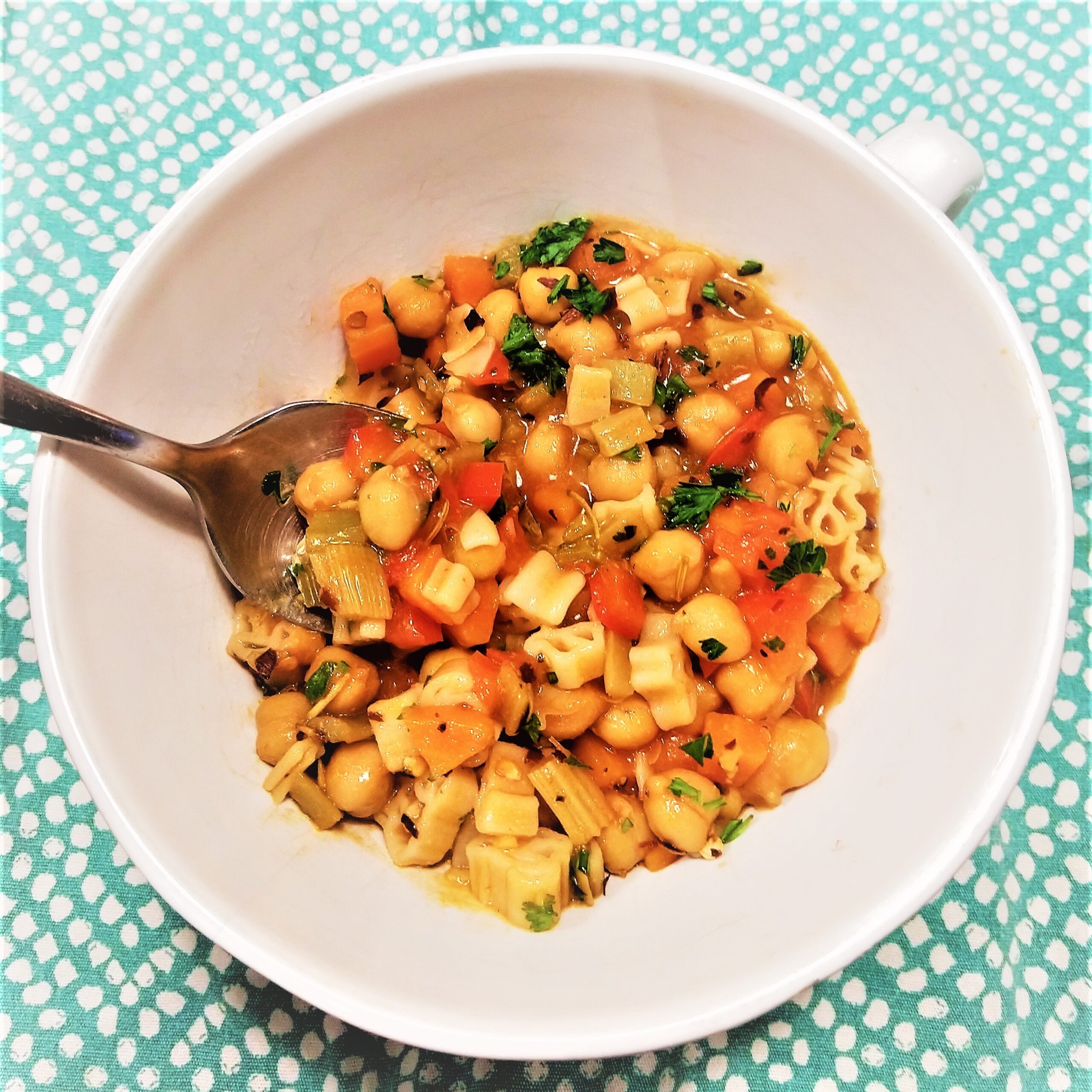Ever since meeting Maryland-born Boyfriend, Old Bay has somehow scuttled its way into my home (along with items covered in the Maryland state flag). While I prefer the spiciness of Cajun/Creole seasonings, Old Bay has grown on me. I love having tartar sauce on hand to pair with those flavors! Homemade tartar sauce provides a tangy, creamy compliment to fried foods, adds fat to seafood dishes, and helps cut the heat if you get excited with spicy seasoning like I do.
Since Boyfriend can’t eat eggs, we’ve made this egg-free version by using homemade vegan mayo with aquafaba. It might seem odd, but the texture is identical! It’s creamy, tangy, and so much cheaper than buying a bottle of vegan tartar sauce at the store!
TTFN: TAR-TAR FOR NOW
Prep:
15-20 min
Chill:
20-30 min
Total:
35-50 min
Using ¼ cup aquafaba, this recipe makes ~1 cup (~237 ml) of egg-free mayo; each serving is 1 tbsp. A batch of tartar sauce yields about 21 servings. If you want more than 1 cup, an average 15 oz can of chickpeas has about ¾-1 cup aquafaba. You’ll need a food processor or an immersion blender. A standing blender won’t work unless it has a small opening at the top where you can gradually stream in the oil. Mechanical advantage and enough space for aeration seem necessary for good texture.
INGREDIENTS:
[MAYO]
- ¼ cup aquafaba (~59 ml)
- ¼ tsp fine salt*
- 1 tbsp lemon juice or apple cider vinegar
- ½ cup mild olive oil (~118 ml)**
- ½ cup neutral oil (~118 ml) (avocado/grapeseed/canola/MCT/etc)
[TARTAR SAUCE]
- 1 tbsp capers***
- ½ cup pickles, chopped (~80 g)
- 1 tsp minced garlic
- 1 tbsp fresh dill (or 1 tsp dried)
- ¼ teaspoon mustard
- ¼ teaspoon paprika
- 1 tbsp lemon juice
[Optional]
- 1 tsp dried tarragon
*I used iodized salt here because eggs are a natural source of iodine. If a diet omits seafood, seaweed, eggs, fortified wheat and dairy products, it may be low in iodine.
**Extra virgin olive oil has more complex notes and stronger flavor profiles that can pull more bitter; you’ll genuinely get best results from mild olive oil and neutral oils. It’s okay to blend different mild oil types; I’ve mixed in some peanut oil when I didn’t want to use a lot of pricey avocado oil. Don’t use anything like coconut oil that solidifies at room temperature.
***You can substitute 1 tbsp green olives in a pinch.
STEP BY STEP:
WAYS TO USE THIS EGG-FREE TARTAR SAUCE:
- Plant-based: Even if you don’t eat meat, tartar sauce is a tasty dip for alternatives to seafood or meat, like plant-based crab cakes, mock seafood sandwiches, faux fish sticks, etc. It also is great with vegetables or potatoes seasoned with Old Bay/Creole/Cajun seasoning, like fried cauliflower “wings,” fries, chips, air-fried radishes, and more. If you’re into baked potatoes, it’s a fun and easy way to switch up your toppings (especially if you’re out of sour cream!)
- Seafood: Traditional crab cakes, fish cakes, and many kinds of fish taste great with tartar sauce (especially when fried!). I think it’s much tastier on cold lobster rolls than just plain mayo!
- Grilling: Add some zippy sauce to a grilled salmon burger or sandwiches with grilled/blackened fish fillets. It’s awesome if you’re making wraps or tacos with blackened shrimp or white fish. Or brush it onto corn on the cob with some Old Bay/Cajun/Creole seasoning and enjoy!
NUTRITION FACTS
Number of Servings: 21
Fiber: 0.1 g
Carbs: 0.3 g
Calories per Serving: 94 kcal
Sugar: 0.1 g
Protein: 0.1 g
Weight per Serving: 14.4 g
Fats: 10.2 g
Iron: 0.0 mg
All servings and nutritional measurements are approximate, excluded additional seasonings, and may vary based upon the type of oil used. These estimates are intended for information and guidance purposes only. Please consult a licensed nutrition or medical professional if you need assistance.
Gluten-Free and Vegan Disclaimer: All of the ingredients listed in this recipe are available in gluten-free and vegan versions. Please do your research and verify ingredient lists, as many products can have surprisingly hidden amounts of gluten that can impact those with Celiac Disease and gluten allergies. Likewise, vegans may need to verify if products contain hidden amounts of whey or animal derived ingredients.

